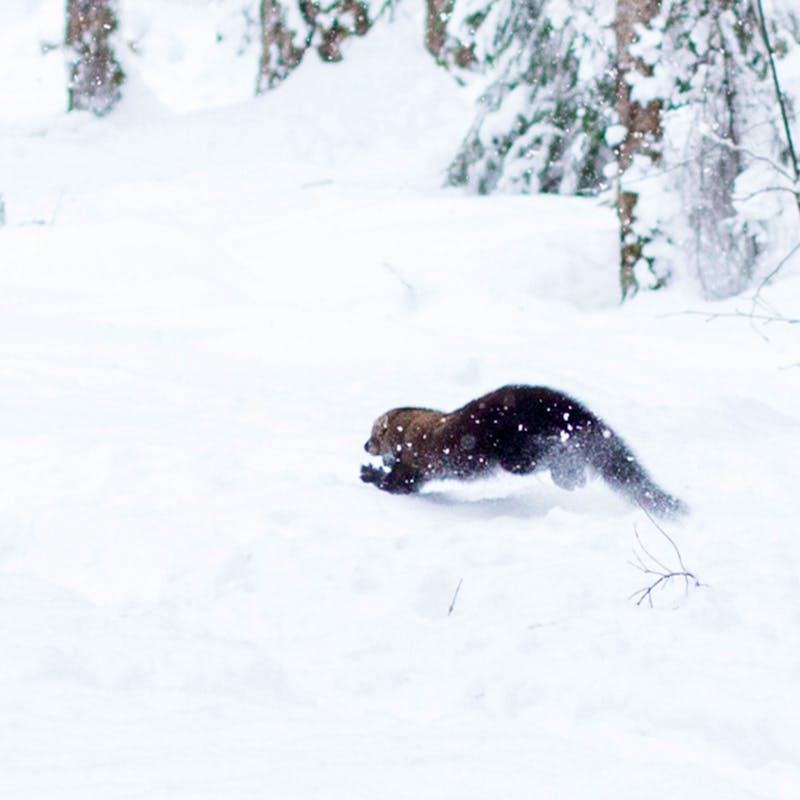Just in time for Earth Day, Defenders announced today that it spent over $300,000 in 2011 to help ranchers and communities coexist with wildlife and maintain a healthy environment.
Through our Wildlife Coexistence Partnership program, Defenders implemented or provided incentives for more than 100 projects in nine states across the country, including Arizona, Florida, Idaho, Kansas, Montana, New Mexico, Oregon, Washington and Wyoming, as well as Mexico. Projects included hiring range riders, creating buffer zones for prairie dogs, paying for electric fencing, purchasing bear-proof food lockers and dumpsters, purchasing trail cameras to document panther activity and compensating ranchers for lost livestock. These projects benefited prairie dogs, bison, gray wolves, grizzly bears, jaguars, polar bears, Florida panthers and Florida black bears.
“The nonlethal tools that we’re testing in places like Idaho, Oregon and Montana are showing that people really can share the landscape with wolves with a little extra effort,” says Suzanne Stone, Defenders Northern Rockies representative in Boise, Idaho. “Fladry, guard dogs, range riders—these basic deterrents have all proven effective when they’re given a chance. We’ve demonstrated that losses to wolves can be dropped to near zero levels if appropriate, proactive steps are taken to prevent conflict. Ranchers are able to safeguard their livestock while helping to maintain healthy populations of native wildlife.”

A relocation project at Thunder Basin National Grassland in eastern Wyoming has helped save prairie dogs from shooting and poisoning.. Photo by Lacy Gray.
“We recognize that living in areas with grizzly bears or roaming bison isn’t always easy. That’s why we’re investing in projects that benefit people and wildlife,” says Jonathan Proctor, Defenders Rocky Mountain representative in Missoula, Montana. “For example, we helped pay for dozens of projects to keep grizzly bears out of chicken coops, beehives, and trash, primarily by installing electric fencing. These methods work and can prevent conflict with minimal upfront cost to individual property owners.”
“By working together, we are able to bring imperiled wildlife back from the brink of extinction and ease the burden on livestock owners and ranchers,” says Craig Miller, Defenders Southwest representative in Tucson, Arizona. “Our coexistence projects offer a bright future for rare and unique wildlife such as wolves and jaguars and also for ranchers and landowners who are taking steps to help make that possible.”
“The Florida panther’s downward spiral toward extinction has been reversed in recent years and the number of cats has been growing. But for the population to continue to recover, it’s essential the endangered cats avoid conflicts with ranchers and livestock as well as pets and farm animals,” says Laurie Macdonald, Defenders Florida director in St. Petersburg. “By exploring coexistence, compensation and incentive programs that work for both panthers and property owners, we can find effective, long-term solutions that protect the big cats and preserve the Florida rancher’s way of life.”
2011 Totals
Minimum number of proactive projects and incentives by region:
- Northern Rockies – 60
- Southwest and Mexico – 20
- Southeast (Florida) – 21
- Great Plains (Kansas & Wyoming) – 3
Number of compensation payments by region:
- Northern Rockies – 38
- Southwest and Mexico – 2
Minimum number of projects and incentives by species:
- Wolf – 34
- Grizzly bear – 39
- Prairie dog – 3
- Bison – 5
- Jaguar – 2
- Florida panther – 10
- Florida black bear – 11
Number of compensation payments by species:
- Grizzly bear – 31
- Wolf – 9
Minimum amount spent on various project and incentive types:
- Fladry –$20,497
- Range riders – $65,960
- Technical field assistance, workshops and information – $126,509
- Compensation for livestock depredation – $56,650
- Dumpsters, garbage bins and food lockers – $17,483
- Fencing and buffers – $18,650







